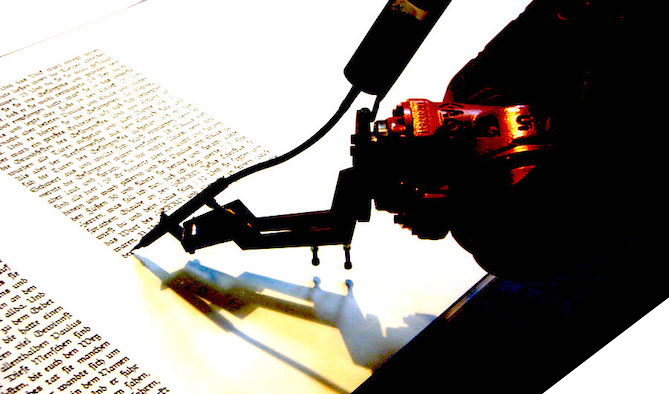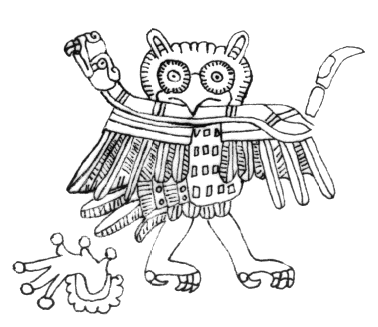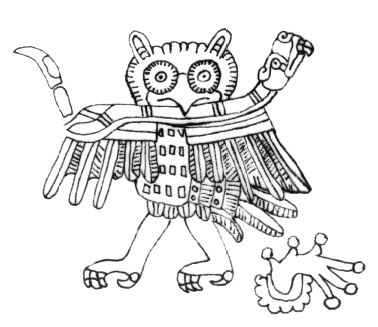Remind you, that Self-plagiarism is an unmitigated violation of research ethics

自己剽窃
Remind you, that Self-plagiarism is an unmitigated violation of research ethics

池田光穂
■自己剽窃(Self-plagiarism)とは
「過去に自分が書いたレポート・ 論文またはその一部を、自分が書いた内容であるからという理由で適切な引用や註釈なしに、他の科目 のレポート・論文に使用することが、自己剽窃にあたります」
★自己剽窃の判断におけるグレーゾンの問題
自分の著作物の重要な部分、同一の部分、またはほぼ同一の部分を、そうしていることを認めず、 元の著作物を引用せずに再利用することは、「自己剽窃」と表 現されることがある。さらに、先行作品の著作権が別の団体に譲渡されている場合には、著作権の問題が発生することもある。自己剽窃は、出版や事実に基づく 文書など、ある出版物が新しい資料から構成されていると誰かが主張する場面では、深刻な倫理的問題とみなされている。しかし他方で、通常新聞や雑誌に掲載 される社 会的、専門的、文化的な意見など、公益性の高い文章には適用されないこともあるため、自己剽窃の判断においては、本人と自己剽窃であると判断する他者の間 の線引きにはグレーゾンが生じる可能性がある。
ウィキペディアには、自己剽窃(じこひょうせつ; Self-plagiarism)あるいは自己盗用「とは、自分の文書(学 術出版、論文、書籍、レポート、申請書など)やデータ、図、表と全く同じもの、あるいは、少し改変したものを、原典の引用なしに、自分で再使用し、発表・ 文書化する行為である。原則的には盗用とみなされ、研究倫理違反(=研究不正)とされる。しかし、違反としない人・機関もあり、問題点が多い」ウィキペディア「自己盗用」)。と記載しているが、端的に言って「違反としない人・機関もあり」という人も機関も現在では大問題であり、自己盗用 とは(グローバルスタンダードでは)立派な研究公正・研究倫理違反であると認定される。
以下の内容は、英語のウィキペディアからの記 事とその翻訳である。
| Self-plagiarism,
Duplicate
publication. |
自己剽窃 |
| The reuse of significant, identical, or nearly identical portions of one's own work without acknowledging that one is doing so or citing the original work is sometimes described as "self-plagiarism"; the term "recycling fraud" has also been used to describe this practice.[74: Dellavalle, Robert P.; Banks, Marcus A.; Ellis, Jeffrey I. (September 2007). "Frequently asked questions regarding self-plagiarism: How to avoid recycling fraud". Journal of the American Academy of Dermatology. 57 (3): 527. ] Articles of this nature are often referred to as duplicate or multiple publication. In addition there can be a copyright issue if copyright of the prior work has been transferred to another entity. Self-plagiarism is considered a serious ethical issue in settings where someone asserts that a publication consists of new material, such as in publishing or factual documentation.[75: ebecca Attwood. "Allow me to rephrase, and boost my tally of articles". Times Higher Education. 3 July 2008.] It does not apply to public-interest texts, such as social, professional, and cultural opinions usually published in newspapers and magazines.[76: Plagiarism Policy". unknown today] | 自 分の作品の重要な部分、同一部分、またはほぼ同一部分を、そのことを認めたり元の作品を引用したりせずに再利用することは、時に「自己剽窃」と表現され る。また、この行為を「リサイクル詐欺」と表現することもある。Dellavalle, Robert P.; Banks, Marcus A.; Ellis, Jeffrey I. (September 2007). "Frequently asked questions regarding self-plagiarism: How to avoid recycling fraud". Journal of the American Academy of Dermatology. 57 (3): 527. ] この種の論文は、重複出版または多重出版と呼ばれることが多い。 また、以前の著作の著作権が他の団体に移転されている場合、著作権の問題が生じる可能性もある。自己剽窃は、出版や事実の記録など、発表物が新しい内容で 構成されていると主張する場面では、深刻な倫理問題とみなされる。[75: ebecca Attwood. "Allow me to rephrase, and boost my tally of articles". Times Higher Education. 2008年7月3日] これは、通常、新聞や雑誌に掲載される社会、専門、文化に関する意見など、公益的な文章には適用されない。[76: Plagiarism Policy". 現在不明] |
|
In academic fields, self-plagiarism occurs when an author reuses
portions of their own published and copyrighted work in subsequent
publications, but without attributing the previous publication.[77:
Hexham, Irving (2005). "The Plague of Plagiarism: Academic Plagiarism
Defined". UCalgary.ca.][78:Roig, M. (2010). Plagiarism and
self-plagiarism: What every author should know. Biochemia Medica,
20(3), 295-300.] Identifying self-plagiarism is often difficult because
limited reuse of material is accepted both legally (as fair use) and
ethically.[79: Samuelson, Pamela (August 1994). "Self-plagiarism or
fair use?" (PDF). Communications of the ACM. 37 (8): 21–5] Many people
mostly, but not limited to critics of copyright and "intellectual
property" do not believe it is possible to plagiarize oneself.[80:
"Reverse Plagiarism? Or, Did I Say That?". 2007-11-26.] Critics of the
concepts of plagiarism and copyright may use the idea of
self-plagiarism as a reductio ad absurdum argument. |
学術分野では、著者が自身の著作権のある出版物をその後の出版物で再利用する際に、以前の出版物を引用せずに使用することを自己剽窃という。[77: Hexham, Irving (2005). "The Plague of Plagiarism: Academic Plagiarism Defined". UCalgary.ca.][78:Roig, M. (2010). Plagiarism and self-plagiarism: すべての著者が知っておくべきこと。 Biochemia Medica, 20(3), 295-300. ] 自己剽窃の特定は、しばしば困難である。なぜなら、限定的な素材の再利用は、法的にも(フェアユースとして)倫理的にも認められているからである。 [79: Samuelson, Pamela (August 1994). "Self-plagiarism or fair use?" (PDF). Communications of the ACM. 37 (8): 21–5] 著作権や「知的財産」の批判者を中心に、多くの人々は、自己盗作はあり得ないと考えている。[80: "Reverse Plagiarism? Or, Did I Say That?". 2007-11-26.] 盗作や著作権の概念の批判者は、自己盗作の考え方を帰謬法の論証として使用することがある。 |
| Contested definition | 定義をめぐる論争 |
| Miguel Roig has written at length about the topic of self-plagiarism[81: Roig, M. (2005). "Re-Using Text from One's Own Previously Published Papers: An Exploratory Study of Potential Self-Plagiarism". Psychological Reports. 97 (1): 43–49][82: Roig, M. (2015) [Created in 2003]. "Avoiding plagiarism, self-plagiarism, and other questionable writing practices: A guide to ethical writing" (PDF). | ミゲル・ロイグは自己剽窃のテーマについて詳細に書いている[81: Roig, M. (2005). "Re-Using Text from One's Own Previously Published Papers: An Exploratory Study of Potential Self-Plagiarism". Psychological Reports. 97 (1): 43–49][82: Roig, M. (2015) [Created in 2003]. 「盗作、自己盗作、およびその他の疑わしい執筆慣行の回避:倫理的な執筆のためのガイド」(PDF)。 |
| "Avoiding Plagiarism, Self-plagiarism, and Other Questionable Writing Practices: A Guide to Ethical Writing". U.S. Department of Health & Human Services: Office of Research Integrity.][83: Roig, M. (8 January 2015). "On Reusing Our Previously Disseminated Work". American Association for the Advancement of Science.] and his definition of self-plagiarism as using previously disseminated work is widely accepted among scholars of the topic. However, the term "self-plagiarism" has been challenged as being self-contradictory, an oxymoron,[84: Broome, M (November 2004). "Self-plagiarism: Oxymoron, fair use, or scientific misconduct?". Nursing Outlook. 52 (6): 273–4. ] and on other grounds.[85: Andreescu, Liviu (November 2012). "Self-Plagiarism in Academic Publishing: The Anatomy of a Misnomer". Science and Engineering Ethics. 19 (3): 775–797] | 「盗作、自己盗作、およびその他の疑わしい執筆慣行の回避:倫理的な執筆のためのガイド」。米国保健福祉省:研究公正局。][83: Roig, M. (2015年1月8日). 「以前に発表した研究の再利用について」. アメリカ科学振興協会] および、以前に発表した研究の再利用を自己剽窃と定義する彼の考えは、このテーマの研究者たちの間で広く受け入れられている。しかし、「自己剽窃」という 用語は自己矛盾であり、矛盾語法であるという批判がある[84: Broome, M (2004年11月). 「自己盗作:矛盾語法、フェアユース、または研究不正行為?」. Nursing Outlook. 52 (6): 273–4. ] およびその他の根拠。[85: Andreescu, Liviu (2012年11月). 「学術出版における自己盗作:誤称の解剖学」. Science and Engineering Ethics. 19 (3): 775–797] |
| For example, Stephanie J. Bird[86: Bird, SJ (October 2002). "Self-plagiarism and dual and redundant publications: what is the problem? Commentary on 'Seven ways to plagiarize: handling real allegations of research misconduct'". Science and Engineering Ethics. 8 (4): 543–4.] argues that self-plagiarism is a misnomer, since by definition plagiarism concerns the use of others' material. Bird identifies the ethical issues of "self-plagiarism" as those of "dual or redundant publication". She also notes that in an educational context, "self-plagiarism" refers to the case of a student who resubmits "the same essay for credit in two different courses." As David B. Resnik clarifies, "Self-plagiarism involves dishonesty but not intellectual theft."[87: Resnik, David B. (1998). The Ethics of Science: an introduction, London: Routledge. p.177, notes to chapter six, note 3] | 例えば、ステファニー・J・バードは[86: Bird, SJ (October 2002). "Self-plagiarism and dual and redundant publications: what is the problem? Commentary on 'Seven ways to plagiarize: handling real allegations of research misconduct'". Science and Engineering Ethics. 8 (4): 543–4.]、自己剽窃という用語は誤称であると主張している。なぜなら、定義上、剽窃とは他者の著作物の使用を指すからである。Birdは、「自己剽 窃」の倫理的問題は「二重投稿または冗長投稿」の問題であると指摘している。また、教育の文脈では、「自己剽窃」とは「同じ論文を単位取得のために2つの 異なるコースに再提出する」学生のケースを指す、とも述べている。David B. Resnikは、「自己剽窃には不誠実さは伴うが、知的窃盗ではない」と明確に述べている。[87: Resnik, David B. (1998). The Ethics of Science: an introduction, London: Routledge. p.177, notes to chapter six, note 3] |
| According to Patrick M. Scanlon,[88: Scanlon, PM (2007). "Song from myself: an anatomy of self-plagiarism". Plagiary. 2 (1): 1–11. ] "self-plagiarism" is a term with some specialized currency. Most prominently, it is used in discussions of research and publishing integrity in biomedicine, where heavy publish-or-perish demands have led to a rash of duplicate and "salami-slicing" publication, the reporting of a single study's results in "least publishable units" within multiple articles (Blancett, Flanagin, & Young, 1995; Jefferson, 1998; Kassirer & Angell, 1995; Lowe, 2003; McCarthy, 1993; Schein & Paladugu, 2001; Wheeler, 1989). Roig (2002) offers a useful classification system including four types of self-plagiarism: duplicate publication of an article in more than one journal; partitioning of one study into multiple publications, often called salami-slicing; text recycling; and copyright infringement. | パトリック・M・スキャンロンによると、[88: Scanlon, PM (2007). "Song from myself: an anatomy of self-plagiarism". Plagiary. 2 (1): 1–11. 「自己剽窃」は、ある程度専門的に使用されている用語である。最も顕著なのは、生物医学における研究と出版の誠実さに関する議論で使用されている。出版か 死かという重圧が、重複出版や「サラミ出版」と呼ばれる出版の急増につながった。これは、単一の研究結果を複数の記事に「最小出版単位」で報告することで ある(Blancett, Flan 1995年、ジェファーソン、1998年、カッシエールとアンジェル、1995年、ロウ、2003年、マッカーシー、1993年、シャインとパラドゥグ、 2001年、ウィーラー、1989年)。Roig (2002) は、4つのタイプの自己剽窃を含む有用な分類システムを提供している。4つのタイプとは、1つの論文を複数のジャーナルに二重投稿すること、1つの研究を 複数の論文に分割すること(サラミスライシングと呼ばれることが多い)、文章の再利用、著作権侵害である。 |
| Codes of ethics | 倫理規定 |
| Some academic journals have codes of ethics that specifically refer to self-plagiarism. For example, the Journal of International Business Studies.[89:Lorraine Eden. "JIBS Code of Ethics". Journal of International Business Studies. Archived from the original on 2010-07-23.] Some professional organizations like the Association for Computing Machinery (ACM) have created policies that deal specifically with self-plagiarism.[90: "ACM Policy and Procedures on Plagiarism". June 2010.] Other organizations do not make specific reference to self-plagiarism such as the American Political Science Association (APSA). The organization published a code of ethics that describes plagiarism as "...deliberate appropriation of the works of others represented as one's own." It does not make any reference to self-plagiarism. It does say that when a thesis or dissertation is published "in whole or in part", the author is "not ordinarily under an ethical obligation to acknowledge its origins."[91: American Political Science Association (2008). "A Guide to Professional Ethics in Political Science". Second Edition. Section 21.1] The American Society for Public Administration (ASPA) also published a code of ethics that says its members are committed to: "Ensure that others receive credit for their work and contributions," but it makes no reference to self-plagiarism.[92: American Society for Public Administration. "ASPA's Code of Ethics"] | 一部の学術誌には、自己剽窃について明確に言及した倫理規定がある。例えば、国際経営研究誌(Journal of International Business Studies)などである。[89: Lorraine Eden. "JIBS Code of Ethics". Journal of International Business Studies. 2010年7月23日アーカイブ] 計算機科学協会(ACM)のような専門機関の中には、自己剽窃に特に対処する方針を定めているところもある。[90: 「ACMの剽窃に関する方針と手続き」。2010年6月] その他の機関では、アメリカ政治学会(APSA)のように、自己剽窃に特段言及していないところもある。この組織は倫理規定を公表しており、その中で盗作 を「他者の著作物を故意に自分の著作物として発表すること」と定義している。しかし、自己盗作については言及していない。論文または学位論文が「全体また は一部」が出版された場合、著者は「その出所を認める倫理的義務を通常負わない」と述べている。[91: American Political Science Association (2008). "A Guide to Professional Ethics in Political Science". 第2版。第21.1項] 米国公共行政学会(ASPA)も倫理規定を公表しており、そのなかで会員は「他者の作品や貢献に対して正当な評価が与えられるようにする」ことを約束して いるが、自己流用については言及していない。[92: 米国公共行政学会。「ASPAの倫理規定」] |
| Source: Self-plagiarism |
☆
| Factors that justify reuse Pamela Samuelson, in 1994, identified several factors she says excuse reuse of one's previously published work, that make it not self-plagiarism.[79] She relates each of these factors specifically to the ethical issue of self-plagiarism, as distinct from the legal issue of fair use of copyright, which she deals with separately. Among other factors that may excuse reuse of previously published material Samuelson lists the following: 1. The previous work must be restated to lay the groundwork for a new contribution in the second work. 2. Portions of the previous work must be repeated to deal with new evidence or arguments. 3. The audience for each work is so different that publishing the same work in different places is necessary to get the message out. 4. The author thinks they said it so well the first time that it makes no sense to say it differently a second time. Samuelson states she has relied on the "different audience" rationale when attempting to bridge interdisciplinary communities. She refers to writing for different legal and technical communities, saying: "there are often paragraphs or sequences of paragraphs that can be bodily lifted from one article to the other. And, in truth, I lift them." She refers to her own practice of converting "a technical article into a law review article with relatively few changes—adding footnotes and one substantive section" for a different audience.[79] Samuelson describes misrepresentation as the basis of self-plagiarism.[79] She also states "Although it seems not to have been raised in any of the self-plagiarism cases, copyrights law's fair use defense would likely provide a shield against many potential publisher claims of copyright infringement against authors who reused portions of their previous works."[79] Source: Self-plagiarism |
再利用を正当化する要因 パメラ・サミュエルソンは1994年に、以前に出版された作品の再利用を正当化するいくつかの要因を特定し、それによって自己剽窃にはならないと述べてい る。[79] 彼女は、著作権の公正使用に関する法的問題とは区別して、自己剽窃の倫理的問題にこれらの要因をそれぞれ関連付けている。以前に出版された素材の再利用を 正当化するその他の要因として、サミュエルソンは以下を挙げている。 1. 2番目の作品における新たな貢献の基礎を築くために、以前の作品を再び述べなければならない。 2. 新たな証拠や論点に対処するために、以前の作品の一部を繰り返さなければならない。 3. それぞれの作品の読者層が大きく異なるため、同じ作品を異なる場所で発表することがメッセージを伝えるために必要である。 4. 著者は、1回目はうまく言えたと思っているので、2回目は異なる言い方をしても意味がない。 サミュエルソンは、学際的なコミュニティ間の橋渡しを試みる際に、「異なる読者層」という理論的根拠を拠り所にしてきたと述べている。彼女は、異なる法律 および技術コミュニティ向けの執筆について言及し、「ある論文から別の論文にそのまま転載できる段落や段落の連続がしばしばある。そして実際、私はそれら を転用している」と述べている。彼女は、異なる読者層に向けて「技術的な記事を、脚注を付け加え、1つの実質的なセクションを加えるなど、比較的少ない変 更を加えて法律評論記事に変換する」という自身の慣行について言及している。[79] サミュエルソンは、誤った表現を自己剽窃の根拠であると説明している。[79] また、「自己剽窃の事例では取り上げられていないようだが、著作権法のフェアユースの抗弁は、著者が以前の作品の一部を再利用した場合に出版社が著作権侵 害を主張する可能性に対して、多くの場合、盾となるだろう」とも述べている。[79] |
| https://en.wikipedia.org/wiki/Plagiarism#Self-plagiarism |
https://en.wikipedia.org/wiki/Plagiarism#Self-plagiarism |
| Plagiarism often involves using
someone else’s words or ideas without proper citation, but you can also
plagiarize yourself. Self-plagiarism means reusing work that you have
already published or submitted for a class. It can involve: Resubmitting an entire paper Copying or paraphrasing passages from your previous work Recycling previously collected data Separately publishing multiple articles about the same research Self-plagiarism misleads your readers by presenting previous work as completely new and original. If you want to include any text, ideas, or data that you already submitted in a previous assignment, be sure to inform your readers by citing yourself. Examples of self-plagiarism You may be committing self-plagiarism if you: 1. Submit an assignment from a previous academic year to a current class 2. Recycle parts of an old assignment without citing it (e.g., copy-pasting sections or paragraphs from previously submitted work) 3. Use a dataset from a previous study (published or not) without letting your reader know 4. Submit a manuscript for publication containing data, conclusions, or passages that have already been published without citing your previous publication 5. Publish multiple similar papers about the same study in different journals https://www.scribbr.com/plagiarism/self-plagiarism/ |
剽窃とは、他人の言葉やアイデアを適切な引用なしに使用することですが、自分自身を剽窃することもあります。自己剽窃とは、すでに発表した作品や授業で提出した作品を再利用することです。以下のような場合があります: 論文全体を再提出する。 以前に提出した論文からのコピーや言い換え。 以前に収集したデータの再利用 同じ研究に関する複数の論文を別々に発表すること。 自己剽窃は、以前の研究を完全に新しくオリジナルであるかのように見せかけ、読者に誤解を与えます。以前の課題で既に提出した文章、アイデア、データを含める場合は、必ず引用して読者に知らせてください。 自己剽窃の例 以下のような場合、自己剽窃を犯している可能性があります: 1)前の学年の課題を現在の授業に提出する。 2)引用せずに古い課題の一部を再利用する(例:以前提出した課題の一部または段落をコピーペーストする) 3)読者に知らせずに、以前の研究(出版されているかどうかにかかわらず)のデータセットを使用する 4)既に発表されたデータ、結論、文章を含む出版用原稿を、以前の出版物を引用せずに提出する 5)同じ研究について、複数の類似した論文を異なるジャーナルで発表する |
| Miguel Roig, On Recycling Our Own Work in the Digital Age. Second Handbook of Academic Integrity, pp 361–380, 18 February 2024. The concept of self-plagiarism has been typically examined as a type of research and/or writing malpractice often associated with forms of publication misconduct, such as duplicate publication and “salami publication.” In these and related transgressions, previously published text, data, or other intellectual content is misrepresented as new material in subsequent publications. These forms of inappropriate reuse will be explored in the context of traditional publication domains, such as journal articles, as well as in other domains of research and scholarship not often addressed by the existing publication ethics literature. The chapter’s discussion of recycling our previously published content is grounded in the notion that authors of scientific and scholarly material enter into an implicit contract with their readers in which readers’ expectations are that, unless otherwise noted, such works are accurate, original to the author/s, and not previously disseminated in a formal manner. Accuracy in science and in scholarship is always a given. However, as researchers and academics often rely on the work of others, authors have an ethical responsibility to alert readers as to when content (e.g., ideas, text, data) are the authors’ own and when they are derived from others’ work. Failure to do so could lead to a charge of plagiarism. Similarly, as previously disseminated content may be re-examined and/or reused, readers should always be informed as to its correct provenance. Previously disseminated content that is reused and presented as if it were new may be construed as an instance of self-plagiarism and, in the case of covertly recycled data, possibly rise to the level of research misconduct. |
ミゲル・ロイグ著『デジタル時代の自らの作品のリサイクルについて』。『第2版 学術的誠実さハンドブック』、361~380ページ、2024年2月18日。 自己盗用の概念は、重複出版や「サラミ出版」などの出版における不正行為と関連して、研究および/または執筆における不正行為の一種として、これまで一般 的に検証されてきた。これらの違反や関連する違反では、以前に出版されたテキスト、データ、またはその他の知的コンテンツが、その後の出版物のなかで新た な素材として誤って表現されている。このような不適切な再利用の形態は、学術誌の記事などの従来の出版領域だけでなく、既存の出版倫理の文献ではあまり取 り上げられていない研究や学術の他の領域でも検討されることになるだろう。 この章で取り上げる、すでに発表済みのコンテンツの再利用に関する議論は、科学および学術的な資料の著者は、読者との間で暗黙の契約を結んでいるという考 えに基づいている。その契約では、特に断りのない限り、そのような作品は正確であり、著者のオリジナルであり、正式な方法で以前に公表されたものではない という読者の期待が示されている。科学や学術研究における正確性は常に前提とされる。 しかし、研究者や学者はしばしば他者の研究に依拠するため、著者は、コンテンツ(例えば、アイデア、テキスト、データ)が著者のオリジナルである場合と、 他者の研究から派生したものである場合とを読者に明確に伝える倫理的責任がある。これを怠ると、盗用として非難される可能性がある。同様に、以前に発表さ れたコンテンツは再調査および/または再利用される可能性があるため、読者には常にその正確な出所を知らせるべきである。以前に発表されたコンテンツが再 利用され、あたかも新しいコンテンツであるかのように提示された場合、それは自己剽窃の一例と解釈される可能性があり、また、隠れて再利用されたデータの 場合、研究不正に該当する可能性もある。 |
| https://link.springer.com/referenceworkentry/10.1007/978-3-031-54144-5_15 |
https://link.springer.com/referenceworkentry/10.1007/978-3-031-54144-5_15 |
このように、自己剽窃に関する議論、すなわち自己剽 窃は(真正なる)研究不正か否かについては、いまだ論争の渦中にあるが、動向として確実に言えることは「自己剽窃に関する議論のうち研究不正ではないとい う主張は通らない」。そしてそのような動向を踏まえて、「自己剽窃は、すでに(非可変的テキストとして)公刊された時点では、完全な再利用は『引用符』に よる引用を例外として研究不正として分類されうる」ということになる。すなわち、自己剽窃は限りなく研究倫理違反に抵触する(Remind you, that Self-plagiarism is an unmitigated violation of research ethics)と肝に命じたほうがよい。
●結論
Remind you, that Self-plagiarism is an unmitigated violation of research ethics. - 自己剽窃は研究倫理に反するこの上ない違反行為であることは、よく覚え的おきなさい。
リンク
文献
Do not copy and paste, but you might [re]think this message for all undergraduate students!!!


++
Copyleft,
CC, Mitzub'ixi Quq Chi'j, 1996-2099